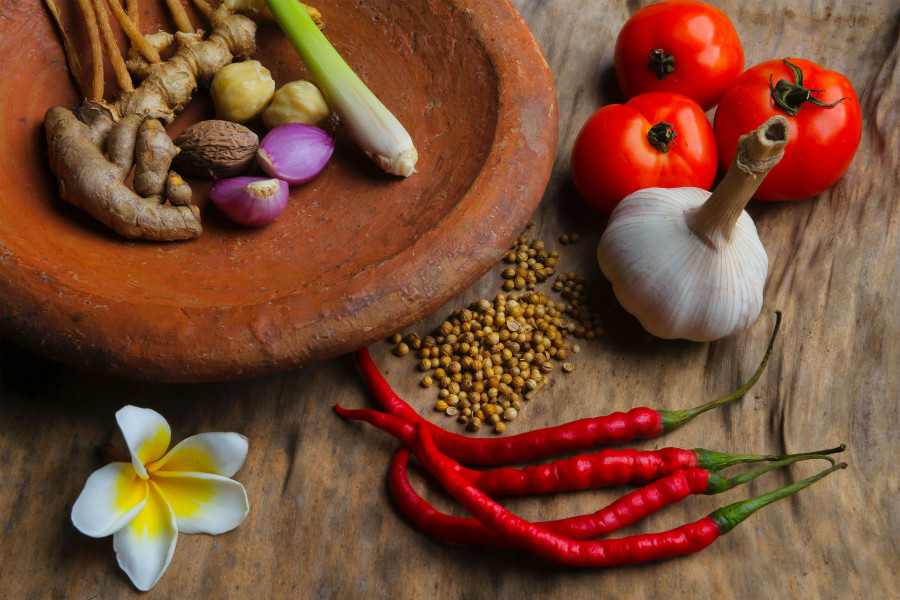Food
Who owns recipes?
When is borrowing a recipe a sign of respect and when a form of appropriation?
Prashanta Khanal
Last month, I published a recipe of kwati with goat meat in The Kathmandu Post daily that sparked many strong criticisms on social media. Some criticised the dish for adding a non-traditional ingredient to a traditional dish. Some called me out for being a non-indigenous person appropriating a traditional recipe of an indigenous community.
Newas cook kwati, a soup made from nine varieties of legumes, on the full moon festival 'Kwaati Punhi’. This traditional dish is sometimes cooked with buffalo meat, momo, flour dumplings, but not customarily with goat meat.
I understand where the criticisms came from. Food is never just food. Food is culture and identity. For some communities, food is associated with a painful history of colonialism and cultural oppression. In Nepal, historically, food has been used as a tool for social exclusion and casteism.
The criticisms, largely, likely owed to my 'higher' caste Khas-Bahun surname. Historically, the so-called higher castes were responsible for social, political, cultural dominance, which still exists today. Thus, I understand why some Newas have raised concerns.
And while I understand where their concerns come from, it’s important for readers too to understand the writer’s intention behind the recipe. It’s also important to understand whether the recipe is de-contextualised from its culture or not. Sometimes, we tend to overshoot with criticism without realising the context. In the article, I clearly described kwati, its culture, and that the Kathmandu's non-Newas adopted the recipe from Newa culture.
Many people don’t realise that I also belong to the Newa community. My mother is Newa. I grew up adopting parts of both cultures; for instance, eating goat meat as well as buffalo meat and consuming alcohol as a sagun, which Bahuns traditionally avoid for religious reasons. Although my mother didn't cook kwati at home, I remember having it at my mamaghar [a mother’s paternal home] when young. I got more acquainted with the kwati culture after I moved to Kathmandu in the early 2000s. Now, I make kwati every year during the Kwati Punhi festival. I find the one with tempering of ghee and jwano delectable.
If I had my mother’s surname, would the kwati with goat meat recipe have been more acceptable? I grew up in a mixed culture. Does that mean I have less authority over the food than 'unmixed' Newas or Bahuns? More than who the writer is, what the writer has written is more important, and whether the culture that the recipe belongs to is acknowledged or not, respected or not, is important.
It’s always nice to read a recipe from a writer of the same community the recipe belongs to, and if the media gives them the space. But shouldn’t someone be able to write about foods outside of their origin as well? Also, as I wrote in the article The Taste of Whiteness, one can experiment with recipes but the intent, mindset and sincerity of the writer is what matters the most.
With food, there is a fine line between culture adoption, cultural assimilation, and cultural appropriation. Cultural appropriation is when the dominant class takes food of a minority community and capitalises or profits from it, often portraying the food as their own or not acknowledging the community. Altering a traditional recipe without understanding the culture and history behind it is also inappropriate.
Cultural assimilation can be negative. Cultural assimilation is when the minority communities or immigrants are absorbed in the dominant culture. Minorities may be forced to assimilate unknowingly—they assimilate in order to survive or avoid backlash from the more powerful community, which might mean gradually losing some of their culture. The assimilation often manifests in food. For example, Newa Muslims taking buffalo meat instead of beef.
Newas adopted momos from Tibet. We then added our own local ingredients. This isn’t cultural appropriation. There was no cultural dominance of one group over another. There is also a difference between the historical adoption of foods by a community, and media and restaurants' appropriating food with an intention of modernising, upgrading, or making palatable a dish for a certain class or race, and that too without acknowledging its origin.
Some also criticised that I instilled higher Khas caste culture and class superiority to the traditional dish by adding goat meat. I agree that higher castes considered goat meat superior to buffalo or pig meat. This notion of superiority might be also the reason why goat and wild boar meat are comparatively expensive. Until recent decades, meat itself was associated with class—only certain classes could afford meat regularly. But that was not my intention in the recipe. I grew up eating both goat and buffalo meat. I like the taste of goat meat.
Buffalo meat is a Newa’s traditional food. However, some Newas sacrifice and consume goat and pig, albeit higher caste Newas adopting goat meat was likely influenced by Hindu caste-based food practice.
Did I think about cultural appropriation and class before writing the recipe? Yes.
There are a few reasons why I chose to publish the recipe instead of the original Newa recipe. First, kwati is popular and well-known to many Nepalis. Many publications have already published about kwati. I have written about it too. Second, many Kathmandu non-Newas, not just Khas, have adopted the kwati recipe. Some make it adding goat meat. Third, I wanted to write about a different recipe, one which I have been cooking for years and love. It was not my intention to prioritise the new recipe over the original or portray a sense of superiority of one over the other.
Would I change the traditional recipe of Newa’s kakwa/bulla (fermented rice ‘thown’ dregs and buffalo meat soup) or Sherpa’s phalgi (dried young maize and bean soup)? Should the media publish those refashioned recipes? No. I believe that altering the recipes of the cultural food that are barely known to the mass is inappropriate.
Food history researcher Binti Gurung, who grew up in a Gurung community outside Kathmandu Valley, started eating kwati when she moved to Kathmandu in the 90s. “So,l for many in our community, can it be described as an adopted cultural food practice?” she asks. Like Binti Gurung, many Non-Newas have adopted some aspects of Newa food culture and mixed with their own.
Like it or not, popular Newa dishes such as kwati and chhoila have transcended the bounds of Newa culture. I believe that is a good thing. Historically, momo wasn’t a Newa dish; but it is now. As momos became popular outside Kathmandu (thanks to the Tibetan diaspora), many Nepalis now consider it their own. This is how cultures everywhere have evolved for generations and will continue to do so. Food and culture don’t thrive in isolation. But it’s important that we don’t forget its history, origin, and cultural significance.
And food definitely shouldn’t be a tool to divide us. It also should not be used to appropriate and lampoon someone else’s culture.




 16.47°C Kathmandu
16.47°C Kathmandu










